Motorola Edge Plus review: It’s... fine?
The company's first flagship phone in years is a $1,000 mixed bag.
Motorola is great at cheap, reliable phones. The expensive stuff, not so much. Consider the brand's track record: Motorola built the high-end Moto Z and Z Force four years ago, which relied on snap-on accessories called Moto Mods to rise above a sea of smartphone sameness. Then that was it. Moto never bothered to make another flagship device that used them. More recently, there was the Razr, a stylish, expensive foldable that, for many reasons, couldn't live up to the hype.
What those phones lacked in polish, they made up for — partially, at least — in ambition and ingenuity. By comparison, the new, $1,000 Motorola Edge Plus feels conventional. It's a monolithic slab with a pretty screen, a crowd of cameras and the same horsepower you'll find in other similarly priced Android phones. Motorola didn't leapfrog the competition so much as sidle up alongside it. That's not such a bad thing this time, though. The Edge Plus has more foibles than a $1,000 device really ought to, but it's proof that Motorola can make a competent — if sometimes confusing — flagship phone.
Key specs
| |
|---|---|
Processor | Octa-core Snapdragon 865 |
RAM/storage | 12GB+256GB |
MicroSD card support | No |
Main display | 6.7-inch “Endless Edge” OLED display, 90Hz refresh rate |
Display resolution | 1,080x2,340 (19.5:9) |
Rear cameras | 108MP f/1.8 wide camera with OIS, 16MP f/2.2 ultra-wide/macro camera (117° field of view), 8MP f/2.4 telephoto camera with OIS, time of flight sensor |
Front-facing camera | 25MP f/2.0 camera |
OS | Android 10 |
Battery | 5,000mAh |
Charging | USB-C, supports 18W fast charging and 15W wireless charging |
Dimensions | 161.1x74.4x9.6mm |
Weight | 203g |
Fingerprint sensor | Yes, in display |
Waterproofing | Water-repellent, no IP rating |
NFC | Yes |
Headphone jack | Yes |
5G support | mmWave and sub-6 |
Configurations
In the US at least, there is precisely one version of the Edge Plus: A Verizon-exclusive model with 12GB of RAM, 256GB of storage and support for the carrier's mmWave 5G network. The privilege of owning Motorola's first new flagship phone in years will cost you $1,000. But if that's a little too much, you may want to wait for the company's slightly more reasonable Motorola Edge to launch later this year. It uses a slightly slower chipset and a different triple-camera setup, but it has the same Endless Edge display.
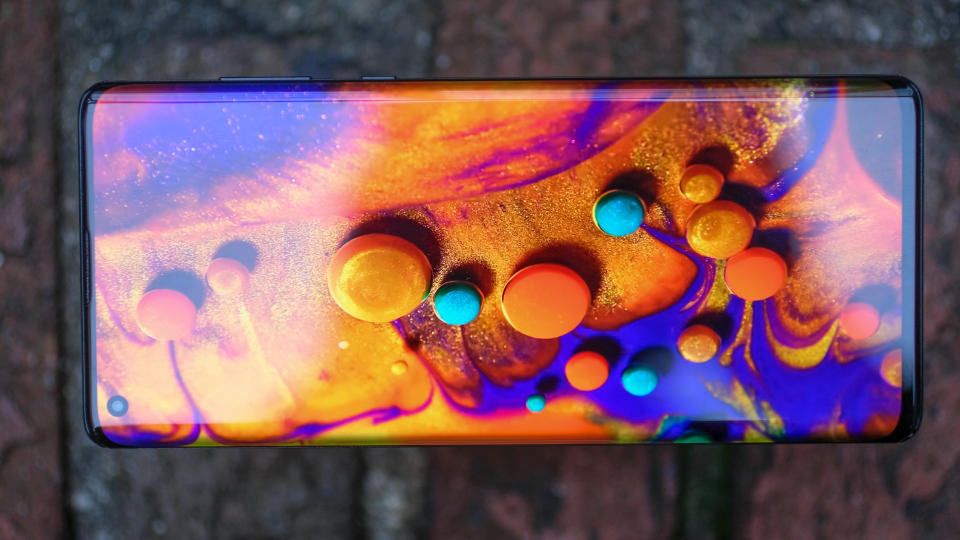
Life on the Endless Edge
Motorola told me earlier this year that the Edge Plus — like the Razr before it — is a design-first phone. Considering how well that approach worked out for Moto's first foldable, I had my doubts.
What Motorola means by "design-first" this time is that it defined what it wanted out of its Endless Edge display and built the rest of the phone around it. (If nothing else, Moto gets credit for baroque branding.) It's a 6.7-inch OLED screen that would feel pretty unwieldy if its aspect ratio was any wider than its 19.5:9. Instead, it's one of the more comfortable big phones I've tested this year. It'll still give people with small hands some trouble, but at least they won't struggle as much to get their mitts around the phone.
More importantly, the screen is a looker — most of the time, anyway. It refreshes at 90Hz, so on-screen motion is smoother than usual, and despite only being Full HD+ (2,340x1,080), clarity isn't an issue. My only real gripe is that when the screen's brightness is bottomed out some noise is apparent when looking at dark images or backgrounds. You might have heard it referred to as "black crush" before, and it manifests as a weird, almost gritty look we've seen in devices like LG's V30 and Google's Pixel 2 XL. Like on those phones, it doesn't impact the Edge Plus’s usability at all; in fact, I didn't notice for a few days, until I started plowing through my Kindle backlog in bed one night. Still, it’s not a great look for a phone that's supposed to be all about the screen.
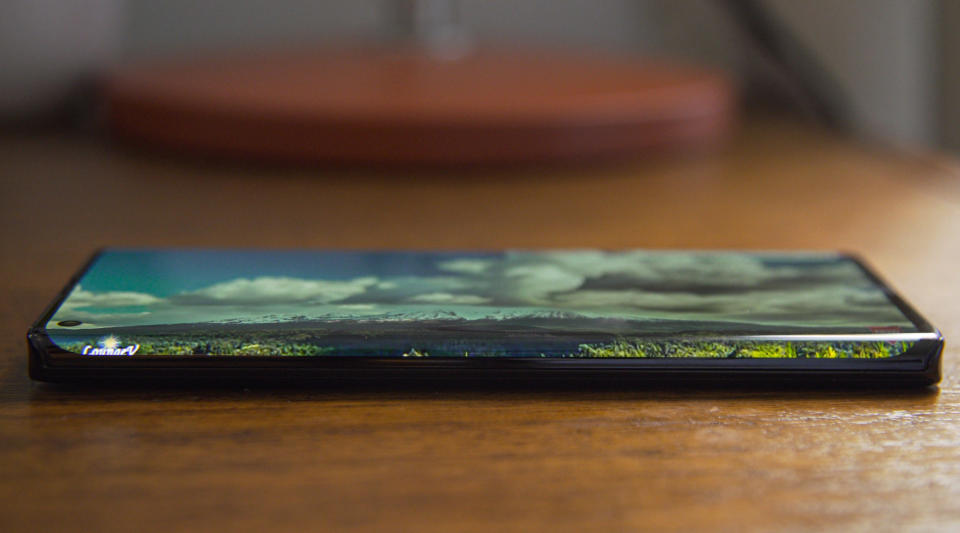
But I’m getting ahead of myself. Before you notice any of that, your eyes will be drawn to the screen’s edges — they curve dramatically around the sides of the phone, stopping just before hitting the halfway mark. I can see why Motorola went with a screen like this; so-called “waterfall” displays are still fairly uncommon, and they’re striking. But here’s an important question: Does the Edge Plus really benefit from using this sort of screen? After a week of testing, I’m not so sure.
One of the arguments you occasionally see thrown around in favor of these screens is that they're "immersive," since less bezel binds them. Fair enough, but how about this: When you’re playing a game or watching a video that stretches out into those edges, a not-insignificant chunk of the stuff on screen points away from you by design — that feels like the opposite of immersive to me. To Motorola’s designers’ credit, they made it easy to disable the screen’s edges entirely, and I’ve done that with more than a few apps this week just so I could reach icons and controls that would've veered away from me otherwise.

These displays also have the potential to be really obnoxious. Because that screen spillover is touch-sensitive, I was worried that accidental touches with the side of my hand would get the Edge Plus doing all sorts of things I didn’t want. Thankfully, that hardly ever happened — Motorola fine-tuned the screen to ignore those glancing touches with remarkable consistency. It wasn’t perfect, but I could use the phone without worrying about my hand placement too much. That’s just not something I could say about a Samsung Galaxy S20 Ultra or a OnePlus 8 Pro.
Of course, Motorola had no choice but to get this right; because the edges stretch so far around the phone, part of your hand will always rest on the screen. Here’s the thing, though: I can’t guarantee your experience will be nearly as smooth as mine. A few people who have also tested the Edge Plus had the exact opposite experience, with errant touches throwing things for a loop when they really shouldn’t have. I can’t stress this enough: The Edge Plus is one of those phones you really have to hold for yourself before buying one.
Now, accidental touches are one thing — what about intentional ones? Motorola added a few features to make these big edges a little more useful. Once you plow through the initial setup, you’ll spot a little pill thing on the far left or right of the screen — double tap that and you can turn the edges off and on. Flick it down and you can open your notification shade; flick it up and you’ll see your running apps. In essence, this pill replicates Android 10’s standard home screen gestures, and they’re especially useful when using the Edge Plus with one hand.
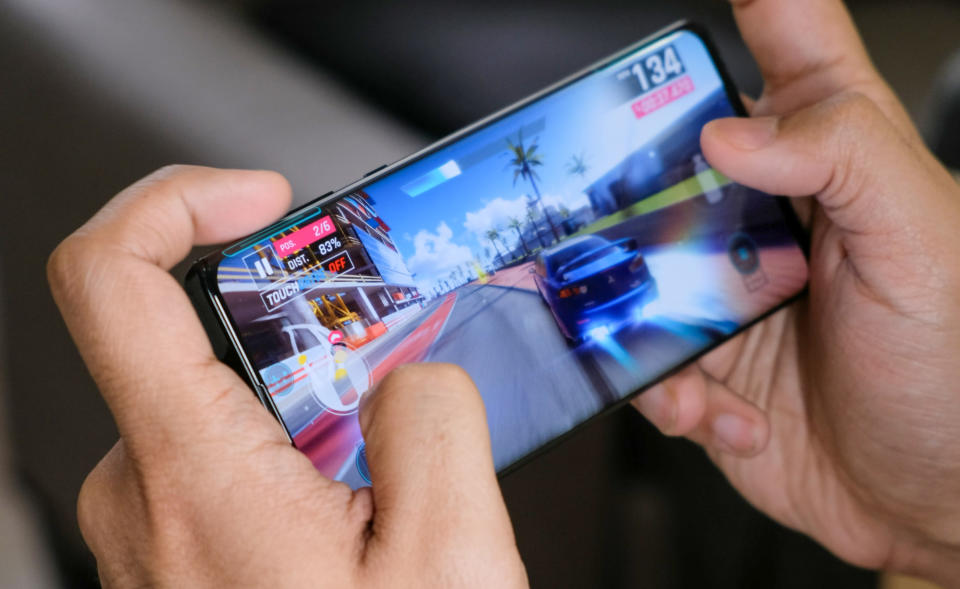
Beyond that, a new app called Moto Gametime gives you basic in-game options, like silencing notifications, but also lets you place virtual shoulder buttons on the edges of the screen. It’s a neat idea and one that comes in pretty handy for games like Asphalt 9 Legends and, especially, Call of Duty Mobile — I've mapped one shoulder button to aim and the other fire, and it's a huge improvement over blindly thumbing at where I think the on-screen buttons are.
The thing is, the Endless Edge display isn't just the visual focal point of this phone; it also defines how the phone feels. Because the screen’s edges wrap so dramatically around the phone, you’re going to spend a lot of time gripping its glossy glass, and that takes a surprising amount of getting used to. There’s very little room separating the screen and the back panel either, so Motorola decided to squeeze some super-slim power and volume keys into the narrow space between those layers. The end result? It’s occasionally hard to tell which key is which, despite some helpful texturing on the power button.
Ultimately, this Endless Edge screen has me torn. It’s neat-looking, certainly, and Motorola came up with a few ways to make its edges more than just eye-candy. Even so, I’m not sold — nothing those edges do feels essential, and this phone would’ve been perfectly capable even with a more conventional screen. (It probably wouldn’t have cost as much, either.)
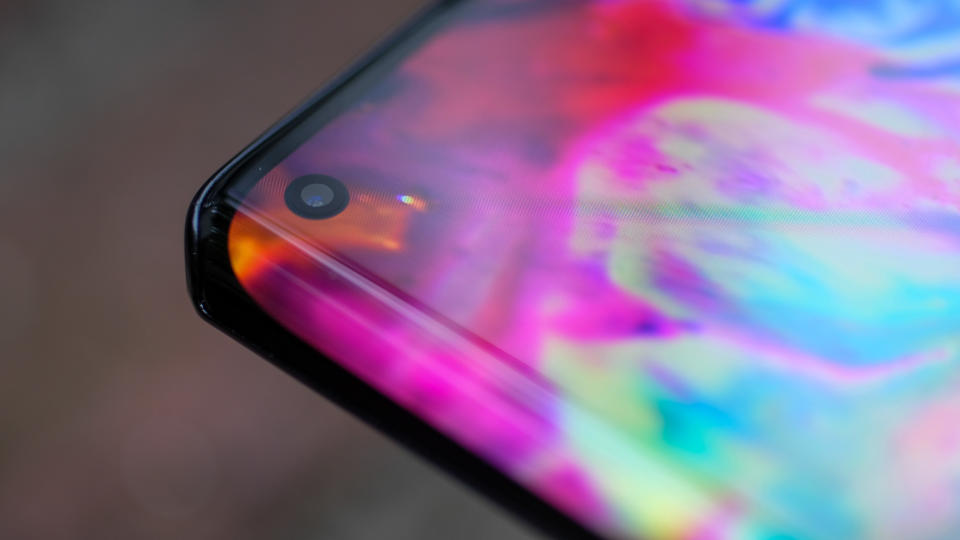
Even if Motorola hadn't told us it designed the Edge Plus around the display, it would've been pretty obvious — some design choices here feel like they could've done with more attention. The big triple-camera hump on the back, for instance, ensures the phone wobbles while sitting on a table. Even the S20 Ultra, which packs an enormous hump of its own, sits more stably when I tap on it. The Edge Plus is one of those phones that just screams for a good case, which is a shame because the granite blue finish around back honestly looks fantastic.
A more robust body would’ve been nice, too. The Edge Plus has no IP rating for water and dust resistance — a relatively common feature of most $1,000 phones. Instead, it relies on a water-repellent nano-coating that Motorola hasn’t gone into much detail about. And the stereo speakers that Motorola seemed so proud of aren't as nice as I'd hoped, either. Moto had some outside help from Waves Audio to tune the Edge Plus's sound. Still, listening to music without headphones sounded a lot like listening to music in a bathroom. The Edge Plus gets plenty loud, but sheer volume only counts for so much when your favorite songs sound hollow and toothless. Thankfully, the speakers fare better when watching movies or playing games, but it’s still a good thing the Edge Plus has a headphone jack.
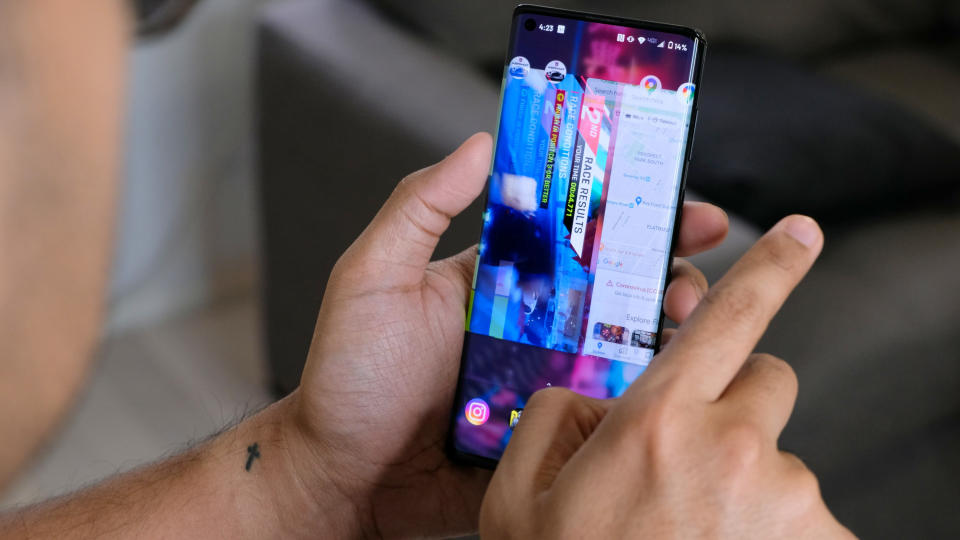
In use
Motorola made some questionable design decisions here, but at least the Edge Plus is a powerhouse. Like most other Android flagships, it has an octa-core Snapdragon 865 chipset with 12GB of LPDDR5 RAM. That’s more than enough horsepower for anyone. Nothing I threw at it over my week of testing could make the Edge Plus falter.
Because everyone is basically peddling the same level of performance, other facets of the smartphone experience become more important. Software is a perfect example. While much better than before, Samsung's custom Android builds are still brimming with apps you’ll never use, and LG — well, LG is sort of a mess. Meanwhile, Motorola has stuck to a tried-and-true formula with the Edge Plus: It left Android 10 more-or-less alone, save for a few classic Moto Actions.
Need to peer into a dark corner of your basement? Karate chop with the phone to fire up the flashlight. The double-twist to launch the camera is back, too, and while it's not quite as fast as double-tapping the power button, I've never missed a shot I wanted to take. These gestures, along with the Gametime feature I mentioned earlier and a few other edge-specific tools, are all Motorola added, and I couldn't be happier for this restraint. Apart from the Pixels, this is the cleanest, most true-to-Google Android phone I've tested in a while. The only thing holding the Edge Plus's software back is the metric ton of bloatware that comes pre-installed because of Verizon's many partnerships and distribution deals. It's a lot, and most of those apps should be deleted or disabled immediately.
Speaking of Verizon (which owns Engadget but has no editorial control over us), the Edge Plus supports the carrier's mmWave 5G network. Technically, the phone also plays nice with sub-6 5G networks, too, but since the phone is exclusive to Verizon in the US, that's kind of a moot point. Here's the thing about Verizon's 5G, though: Most people won't find it particularly compelling, at least not right now. I'm not talking about the fact that the carrier's mmWave footprint is minuscule right now, though it is. (I'm not holding my breath to see it in my corner of Brooklyn anytime soon.)
Perhaps the more notable limitation is that, even with the right phone and the right node around you, you can’t experience the full breadth of what mmWave 5G can offer while indoors. Those limitations will eventually fade as Verizon continues to build out its network's reach, but considering everything going on right now, it's unclear how or when that work will continue. I've reached out to Verizon for comment and will update this review if they respond.
By far, the most reliable thing about the Edge Plus is its whopper of a 5,000mAh battery. These giant cells are growing more common by the week, and even though we're all hunkering down a few feet from a wall outlet, the thrill of breezing through a day and then some on a single charge never really goes away. I typically unplugged the phone between 8 and 9AM, and even with lots of YouTube videos, Telegram calls, email triaging and Call of Duty matches, the Edge Plus always lasted through the night. More often than not, there'd still be enough left in the tank to make it to noon the following day.
On weekends, when I spent a lot less of my time on those things — except for maybe Call of Duty — I could get close to two days of use before recharging the phone. The caveat is that the Edge Plus only supports 15W fast charging, which isn't quite as fast as other phones, but the upside is you won't need to charge everyday anyway. For all its quirks, I'd be tempted to buy an Edge Plus for its battery life alone.
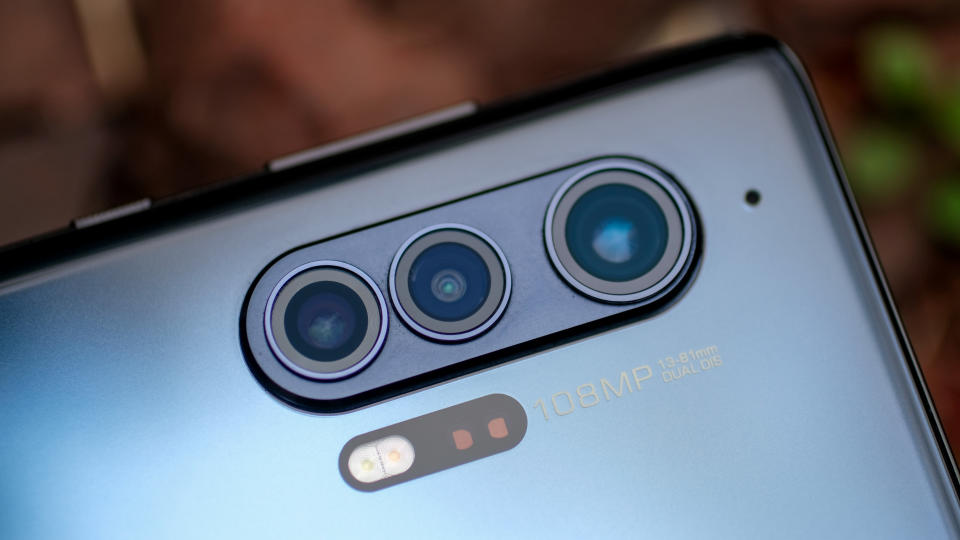
Cameras
Motorola has never really been known for its great cameras, but that approach started to change with the rise of its One smartphones — since these weren't bargain devices, we saw the company embrace more sophisticated, flexible sensors. With the Edge Plus, though, Motorola is really swinging for the fences. In addition to a 25-megapixel selfie camera, Motorola went with these sensors around back:
A 108-megapixel wide-angle camera with optical image stabilization (OIS) and an f/1.8 aperture. This is the camera you'll probably use most frequently, though maybe not at full resolution — by default, the Edge Plus bins multiple pixels together to produce 27-megapixel stills.
A 16MP ultrawide camera with an f/2.2 aperture that captures a 117-degree field of view. It can't capture quite as much of what's in front of you as the iPhone 11 Pro or Galaxy S20, but this turned out to be a decent utility player, especially since it doubles as a macro camera for super-tight shots.
An 8-megapixel telephoto camera with 3x optical zoom, OIS and an f/2.4 aperture. Unlike other long-range cameras we've seen this year (looking at you, OnePlus 8 Pro), this one actually uses optical zoom for better clarity.
A time-of-flight sensor for fast autofocus and better background separation in portrait mode.
In short, Motorola put together a seemingly solid collection of cameras, and they churned out their share of decent photos. Thanks to its crazy-big sensor, that main camera was especially pleasant to shoot with. It captured some details that weren't as easy to spot in similar photos taken with the iPhone 11 Pro and OnePlus 8 Pro. And because that sensor is so big, low-light and night photos came out better than I’d expected. They’re not amazing by any stretch, mind you — fine details all but disappear — but they’re often perfectly passable for Instagram. There's a built-in Night Vision to help in those super dim situations, and it’s a big help for amping up colors, but unless it was pitch-black out, I found myself preferring the darker, moodier images I got with Night Vision off.
Like everything else about the Edge Plus, though, this camera has its quirks. Its colors skew pretty warm compared to the phones I tested it against, and its HDR processing feels lacking. In almost every photo, the sky looked notably drab compared to whatever was in the foreground. And really, that processing is everything — Apple and Google have proven that aging camera sensors can produce fantastic photos with the right intelligence behind them. Motorola's approach here is very much the opposite: It's all brute force with little underlying finesse. Because of that, the main camera ultimately produces good — not great — images.

The same goes for the ultra-wide and telephoto cameras. The former generally did a nice job during the day, even if it sometimes struggled to produce natural-looking colors. In low-light, just forget about it — the results you’ll get aren’t even worth looking at, and you can’t salvage those attempts with Night Vision since the feature only works for primary and telephoto cameras. For what it’s worth, though, it handles its side job as a macro camera surprisingly well, to the point where I’ve started shooting coins and other miscellaneous knick-knacks for fun. And the telephoto camera? Well, it's perfectly fine. Of the two situational cameras, it's the one that got the most use and the one that let me down the least.
There are a few other things to note: If video is more of a concern, the Edge Plus shoots at resolutions as high as 6K, and Motorola’s video stabilization works surprisingly well. And when you double-twist the phone in your hand to launch the camera, get ready to hear some strange sounds. Apparently, there are small bear bearings inside the camera housing that get magnetized to assist with optical image stabilization. When the camera isn’t on, the magnet isn’t on, so those ball bearings just kind of... rattle around. Honestly, it sounds like there’s more moving around inside than just ball bearings, but Motorola wouldn’t comment on that.
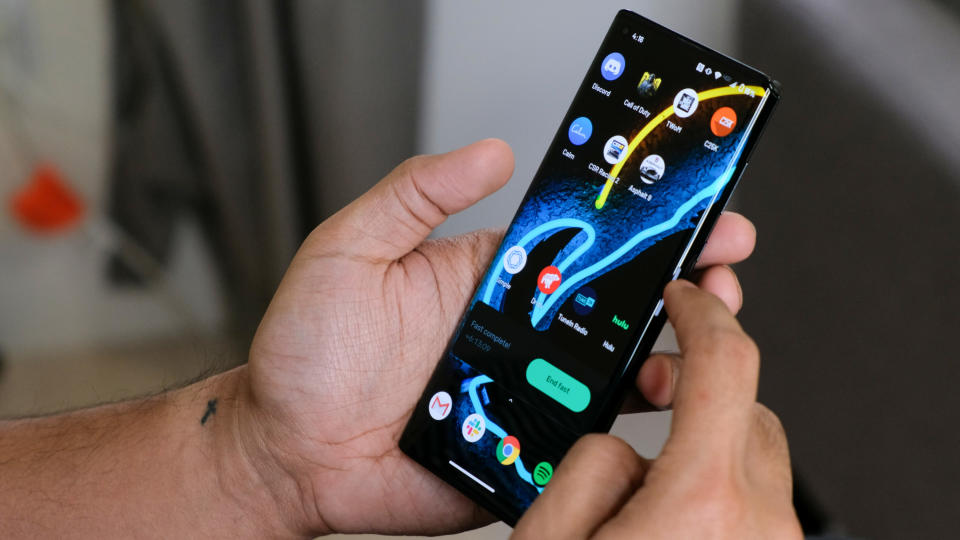
Wrap-up
My time with the Edge Plus was more of a roller coaster than I expected. At first, I disliked it — it felt like yet another Motorola phone that focused on design to the detriment of usability. A day or two later, I loved it for its battery life and its relatively clean software. Now, at the end of it all, I'm somewhere in the middle. It’s been a long time since I tested a phone that was so charming and so confusing in equal measures. I suppose it makes sense, though — Motorola hasn’t made a premium, high-performance phone in years, and its competition has spent that time dutifully honing its craft. I don’t doubt that Motorola could compete with that crowd in time, but for now, the Edge Plus is a mostly competent flagship adrift in a sea of stronger competitors.

